Introduction
Delve into the sweet history of the UK, and you'll stumble upon a sugary gem known as Spangles.
These delightful boiled sweets, crafted by Mars Ltd, painted the taste buds of Britons with a myriad of flavours from 1950 to the early 1980s.
A reminiscence of simpler times, Spangles were not just a sweet treat but a nostalgic voyage to an era gone by. As we unwrap the story of Spangles, we venture into a sweet narrative intertwined with the cultural tapestry of post-war Britain.
The Sweet Beginnings
The tale of Spangles began in 1948, at a time when the wounds of the Second World War were still fresh, and the nation was in the clutches of rationing.
Among the gloom, Spangles emerged as a sweet solace, requiring only a single ration token when most sweets demanded two. This economic sweetness quickly propelled Spangles to be a cherished choice among the masses. The initial unwrapped version, and later the cellophane wrapped iteration, found its way into the hearts and pockets of many, becoming a symbol of sweet respite during tough times.
The Taste Spectrum
The allure of Spangles wasn't confined to its ration-friendly nature; it was the explosion of flavours that captivated many a palate. From the tangy tinge of acid drop to the comforting sweetness of blackcurrant, and the exotic allure of cola, Spangles offered a sweet escape into a world of diverse flavours. Strawberry, orange, pineapple, lemon and lime too joined the flavour parade, making each Spangle a bite of vibrant taste adventure. The translucent, fruit-flavoured sweets were not just a treat to the taste buds but a colourful spectacle to the eyes, making the experience of savouring Spangles a multi-sensory delight.
Evolution Through the Decades
The journey of Spangles was akin to a sweet melody with numerous notes, evolving with the changing tastes of time.
The 70s saw Spangles embracing a transformation, bidding adieu to some flavours while welcoming new ones into its sweet fold. Mars decided to amplify the allure by introducing larger sweets with hard shells encapsulating chewy centres. The metamorphosis wasn’t confined to just the taste and texture; it was a reflection of the shifting consumer preferences and a testament to Spangles’ endeavour to remain the cherished sweet companion.
Creating a precise timeline for the different flavours of Spangles is challenging due to a lack of detailed historical records on the exact dates of introduction or discontinuation of each flavour. However, I can provide a general outline based on the available information:
Initial Flavours (from 1950):
- Original Fruit Flavours: Strawberry, Blackcurrant, Orange, Pineapple, Lemon and Lime, and Cola
Additional Flavours (dates unknown):
- Single Flavour Varieties: Acid Drop, Barley Sugar, Liquorice, Peppermint, Spearmint, and Tangerine.
1970s Changes:
- During the 1970s, some flavours were discontinued, like Acid Drop, while new flavours and a new form of Spangles with hard shells and chewy centres were introduced. One of the new fizzy flavours was Fizzy Orange.
Old English Spangles (dates unknown):
- Traditional English Flavours: Liquorice, Mint Humbugs, Cough Candy, Butterscotch, and Pear Drops.
The Unwrapping of the End
As the sweet saga continued, a bitter note struck in the early 1980s when Spangles bid adieu to the sweet shops. Concerns surrounding tooth decay among children cast a shadow over the sweet narrative of Spangles, leading to its discontinuation. The withdrawal was more than just a halt in production; it marked the end of an era, leaving a void in the hearts of Spangles aficionados. The sweet memories lingered, but the shelves remained bereft of the chewy, colourful delights that once stood as a sweet emblem of post-war Britain.
A Brief Sweet Comeback
The tale didn’t end with the unwrapping of the last Spangle.
In April 1994, the sweet melody of Spangles played once again as they were relaunched. Though brief, this resurgence was a sweet flashback, a chance to relive the chewy escapades and colourful journeys. The 90s saw a new generation getting a taste of the past, albeit for a short spell. It was a sweet ode to the bygone era, a reminder of the sweet simplicity that Spangles brought to the everyday life of post-war Britain.
Legacy and Nostalgia
The chronicle of Spangles transcends beyond its tangible sweet form into the realm of cherished memories and nostalgic conversations. The sweet's portrayal in media, often as a symbolic relic of the 1970s, despite its earlier inception, reinforces its emblematic status in the UK’s confectionery annals. Spangles are more than just a sweet; they are a vessel of time travel for many, transporting them back to the sweet shops of their childhood, with wide-eyed wonder and a pocketful of ration tokens.
The Sweet Void
The discontinuation of Spangles left a sweet void in the hearts of many. It's not just about the loss of a beloved sweet, but the fading away of a piece of history, a sweet fragment of the cultural tapestry. Discussions around Spangles often meander into broader reminiscences of bygone days, evoking a collective nostalgia. The desire for the return of Spangles reflects a yearning for simpler times, a sweet respite in the complex modern-day narrative.
Other Iconic Sweet Delights: A Sugary Farewell
The bygone eras were not just the golden days for Spangles; they were a sweet haven for numerous confections that tickled the taste buds of the Britons. However, as time marched on, several of these sweet delights faded away into the pages of confectionery history. Here are a few:
Aztec Bar: A luscious mix of caramel and nougat, the Aztec Bar was a sweet treasure that bid farewell, leaving behind a trail of caramel dreams.
Fry’s Five Centres: A whimsical creation with five delightful centres, each offering a unique flavour voyage. Its disappearance marked the end of a sweet era of flavourful exploration.
Treets: The vibrant predecessor to M&Ms, Treets were a colourful joy in every bite. Their departure was not just the end of a sweet, but the end of a colourful chapter in the UK’s sweet narrative.
Opal Fruits: The fruity delight that sweetened the British taste buds under the original moniker before morphing into the globally known Starburst. The name Opal Fruits is now a sweet echo from the past.
Toffo: The chewy toffee delight that once ruled the sweet realm with its variety of flavours. The sweet silence post its departure is often reminisced with a chewy nostalgia.
The disappearance of these iconic sweets was not merely a cessation of production; it was a sweet farewell to a cherished part of British culture. Each sweet not only offered a unique taste but also held a distinctive place in the heart of the nation.
Conclusion: The Sweet Memories Linger
The tale of Spangles is a sweet sojourn through the UK's confectionery history, offering a glimpse into the evolving societal landscape from post-war rationing to the colourful 70s and beyond.
Though Spangles may no longer grace the sweet shop shelves, they continue to live on in the sweet memories of many, a cherished chapter in the UK's confectionery saga. The sweet reminiscence of Spangles evokes a collective nostalgia, a sweet legacy that continues to resonate through the annals of time, one sweet memory at a time.





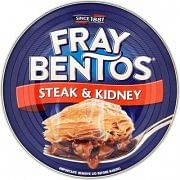







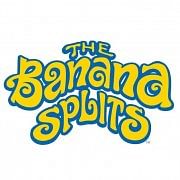





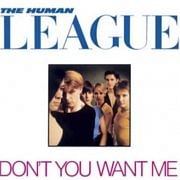




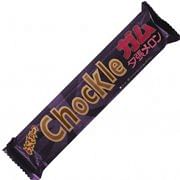





















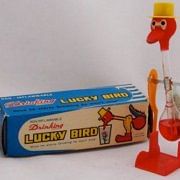



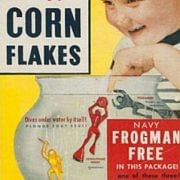












Enter the code in the box below: